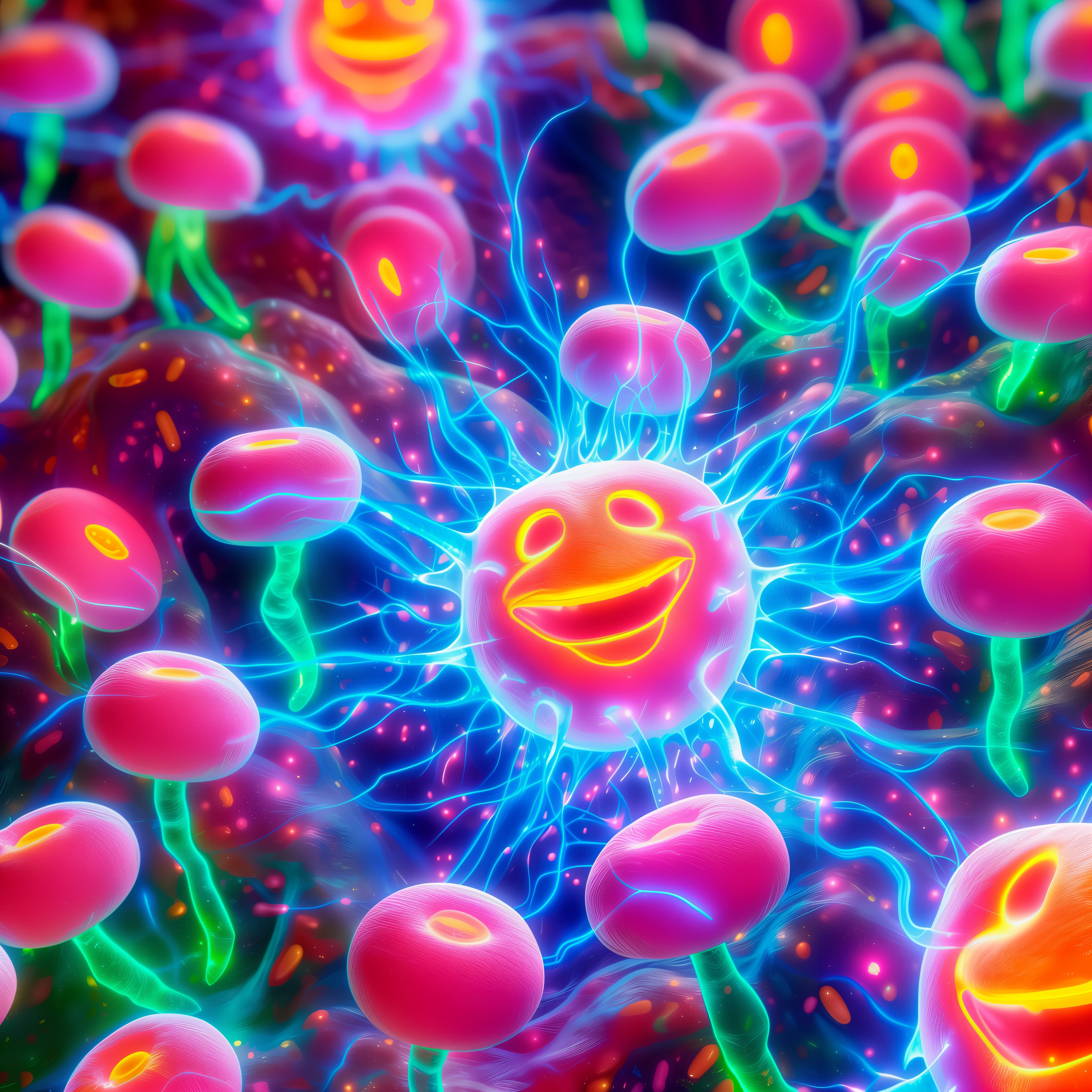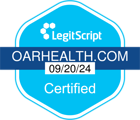The Power And Potential Of Endorphins For Alcohol Use Disorder

Oar Health had the privilege of speaking with John Umhau, MD, MPH, CPE about his integrative treatment approach to Alcohol Use Disorder, including nutrition and endorphin production.
Dr. Umhau is the Medical Director of Alcohol Recovery Medicine and was the Senior Clinical Investigator at the National Institute on Alcohol Abuse and Alcoholism at the National Institutes of Health for over 20 years. He has authored more than 50 scientific publications and served in the FDA.
When Dr. John Umhau was in a residency program at Johns Hopkins to study a seemingly simple question, “What keeps people healthy?” he found himself intrigued by Alcoholics Anonymous (AA) meetings. The core of his fascination wasn’t the 12-step ideology accompanying weekly meetings but the philanthropic sense of community—attendees were there to help one another. This observation spurred research on what happens to the brain in a 60-minute meeting and why it might help people stay sober.
Alcohol Use Disorder is a complicated condition, stemming from varying sources such as genetics, someone’s environment, and stress exposure, or even as a byproduct of medications such as SSRIs. This makes treatment, which is gravely underutilized, an even more enigmatic task. Decades of medical research show that three evidence-based methods are effective, but no universal treatment approach exists. The addiction recovery world can be incredibly dogmatic; Dr. Umhau finds that treating addiction is more nuanced and recovery is about the whole person, not a singular treatment.
One of the revelatory treatments for Alcohol Use Disorder is The Sinclair Method (TSM), which uses targeted naltrexone an hour before drinking to block the euphoric effects of alcohol. Eventually, someone practicing the method may experience no cravings in the future.
Eradicating the urge to drink sounds remedial, only, The Sinclair Method (TSM) has a large caveat. For the medication to work, someone must adhere to its rules. Noncompliance is the most common reason why someone is unsuccessful with TSM. This can be difficult for someone to do when they have a brain disorder, like Alcohol Use Disorder, because it can damage brain function and impair decision-making and impulse control.
Helping The Brain Heal
Dr. Umhau believes that The Sinclair Method (TSM) can be quite helpful for those with Alcohol Use Disorder, but helping the brain so that someone can take the medicine is key. But how does someone assist this vital organ so that they can access the benefits of TSM or medication? Dr. Umhau proposes, and substantiates through research, that the answer could be as simple as a trip down the vitamin aisle at a local pharmacy.
People with Alcohol Use Disorder are often malnourished, Dr. Umhau explains, and aside from other nutritional guidance like eating well, Omega-3 fatty acids can be a vital part of someone’s recovery. Omega-3s are concentrated in the brain and high doses for those with AUD can help fight the inflammation that the brain disorder causes. Dr. Umhau reports that his patients think more clearly when they take Omega-3.
Research also offers a hopeful outlook on the damage that Alcohol Use Disorder can cause to the brain. The brain has the capacity to regrow after alcohol cessation by 2% in volume in 6 weeks, Dr. Umhau explains. The culprit of the brain mass is Omega-3.
Nutrition, specifically Omega-3 intake, is the first of Dr. Umhau’s three-part approach to Alcohol Use Disorder treatment. Someone needs a clearer mind to take the medicine.
The second part of Dr. Umhau’s approach is to curb alcohol cravings, which can be accomplished through medicines, such as naltrexone. Naltrexone works by blocking the brain’s opioid receptors, or the feel-good chemicals that alcohol induces. By blocking the pleasurable effects, naltrexone can help stop cravings. Naltrexone is one of three FDA-approved medicines for Alcohol Use Disorder; different medicines may work for different people, Dr. Umhau notes.
What Do Endorphins Have to Do With Alcohol Use Disorder?
Fascination with feel-good chemicals is a substantial part of Dr. Umhau’s approach to Alcohol Use Disorder treatment. Remembering that naltrexone blocks endorphins, and people drink for the euphoric effect, the common question people ask is “How do you replace endorphins when no longer drinking?”
Dr. Umhau explains that people with Alcohol Use Disorder often have an endorphin deficit, or less endorphins than those without the disorder. This deficiency can drive an alcohol dependence, as drinking temporarily boosts endorphin levels, creating a cycle of dependency. For someone with Alcohol Use Disorder, the quest for feel-good chemicals can motivate someone’s choices. Those with Alcohol Use Disorder have increased endorphin sensitivity, which makes them more prone to alcohol’s effects.
Although it is recognized as a deficiency, Dr. Umhau has a unique view of the trait and thinks it’s a good gene to have. He explains that gregarious people who thrive in groups are positive for society.
“You’re not deficient because you have Alcohol Use Disorder, our society needs you. People with Alcohol Use Disorder have a lot of potential to be society’s unifiers,” Dr. Umhau says.
While individuals with Alcohol Use Disorder may have previously received endorphins through alcohol, there are plenty of ways to produce them and ensure a high quantity. This ties together Dr. Umhau’s third puzzle piece of Alcohol Use Disorder treatment, which is creating a culture in tandem with those seeking to reduce or stop drinking and boost endorphins with experiences aside from alcohol.
Endorphins can eliminate pain, reduce stress, elevate the mood, and reduce inflammation. Because endorphin levels are lower in people who have Alcohol Use Disorder, they need to do more endorphin-boosting activities.
Boosting Endorphins Without Alcohol
Dr. Umhau has compiled an extensive list of researched activities promoting endorphin production.
- Altruism activities like donating blood or giving money to charity
- Sunlight
- Spicy foods
- Sexual activity
- Activities performed in synchronicity with other people:
- Cooking a meal with friends
- Dogs
- Comedy and laughing with others
In recovery communities, endorphin boosting could look like turning your camera on in an online TSM meeting and talking to others practicing the method. It could also mean helping a newcomer to an AA meeting find their chair, or holding hands while you recite the serenity prayer.
Returning to Dr. Umhau’s earlier observation about why AA might benefit the brain—the brain learns to reassociate the intention to stay sober as something done not just for the individual, but also for those in the community. For endorphin production, social bonding is essential. There is a powerful correlation between Alcohol Use Disorder and endorphins and there are numerous ways to help support this synergy.
“I don’t blame my patients. I care about them. I see their potential to heal,” Dr. Umhau says. This philosophy embodies a future of addiction care rooted in science, empathy, and an integrative approach. Qualify For Treatment
About The Author
Xenia Ellenbogen (she/they) is a journalist specializing in health, mental health, and wellness. Her writing has appeared in publications such as Everyday Health, Well+Good, Rewire News Group, Prism, and more.
Related Articles
- How It Works
- Alcohol & Health
- Alcohol Misuse & Alcohol Use Disorder
- Strategies to Drink Less or Quit
- Treatment Options
- Medication-Assisted Treatment
- Recovery Stories
- Member Stories
- Moderation Stories
- Sobriety Stories
- ¹ Oar Health membership plans include access to the Oar Health platform, virtual consultations with a healthcare professional, and medication if prescribed by a healthcare provider. 3 month membership plan costs $297, equating to $99/mo.
- ² Self-reported by members after 6 months of Oar Health membership.
- ³ Verywell Health survey of Oar Health members, published March, 2023.
- ⁴ Prescription medication is available only if prescribed by a licensed clinician.
- ⁵ Compounded medications are prepared based on a prescription from a healthcare provider. They are not reviewed by the FDA for safety or efficacy.




